
To adequately define eternalism, it’s necessary first to explore a few characteristics of Biblical prophecy.
- Prophecy foretells and predicts (Webster);
- Symbolic images are often employed;
- Some images and circumstances are familiar to the recipient;
- Other images seem mysterious or cryptic but can be explained using definitions found in other Biblical texts;
- Prophecy is one of the gifts of the Spirit (1 Cor 12:10);
- Prophecy is given for the common good (1 Cor 12:7).
Why are images and pictures used in prophetic writing? Why not just say what you mean? Is a picture truly worth a thousand words? Sometimes, yes! Think about it. How often has a concept or theory escaped you until someone illustrated it by telling a story or sharing a personal experience?
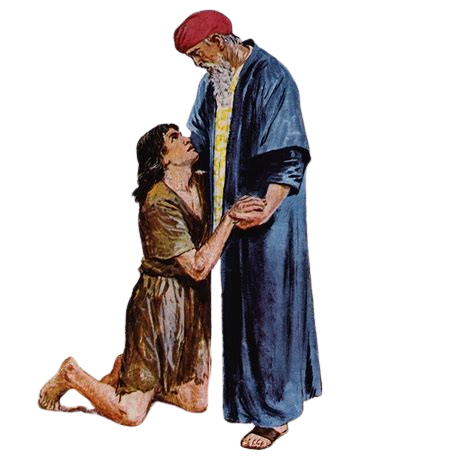
Jesus used parables to illustrate his teachings. Consider his story about the prodigal son. He could have simply said, “God forgives you,” and left it at that. Instead, he shared the story of a wayward son returning home to a loving and forgiving father (Luke 15:11-32). Now, the concept of grace and forgiveness can be understood by any person regardless of race, level of education, cultural background, or political affiliation.
Many symbols are significant to a particular culture. A picture of an American bison would have been very significant to early Native Americans. An image of the American flag shouts volumes to U.S. citizens. A picture of a plow implies hard work, a cornucopia signifies plenty, and an oak tree symbolizes strength.
For example, what do each of the following symbols suggest to you:

Consider the following pictures as symbols. First, identify each picture, then consider the meanings each one brings to your mind. Next, think about what that same image might have meant to an ancient Israelite:
My impression
An Israelite’s Impression
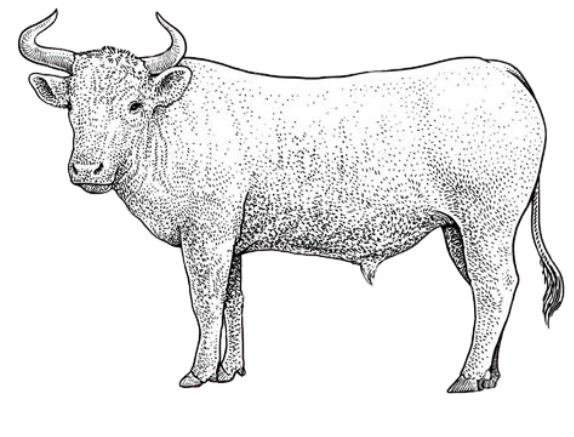
Example: Bull, Ranch, steak
Example: Ox, Work, food, sacrifice
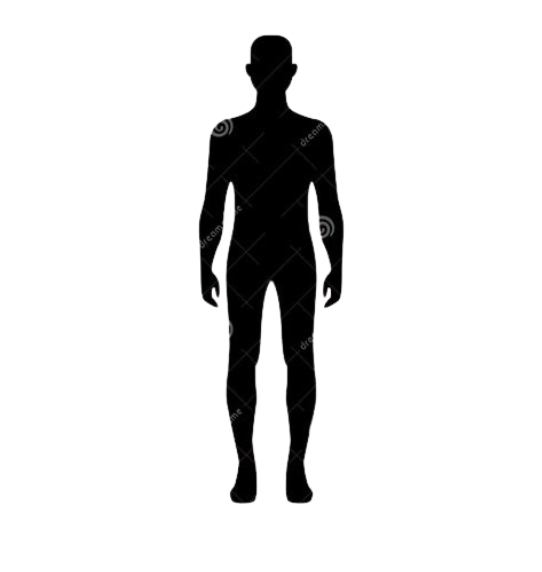
________________________________
________________________________

________________________________
________________________________
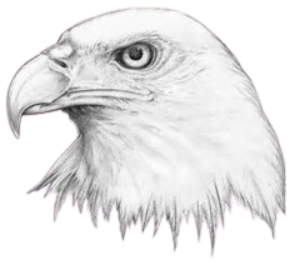
________________________________
________________________________
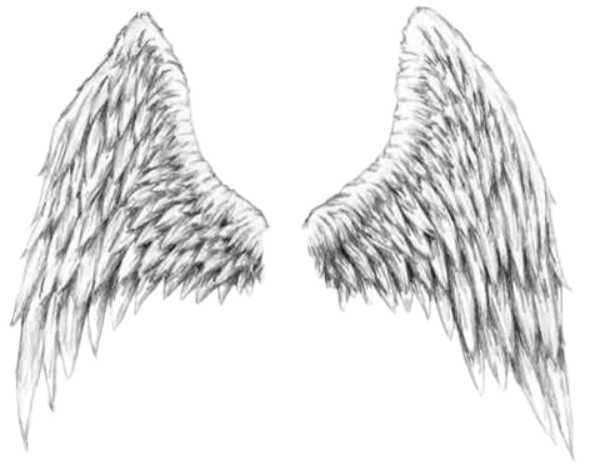
________________________________
________________________________

________________________________
________________________________
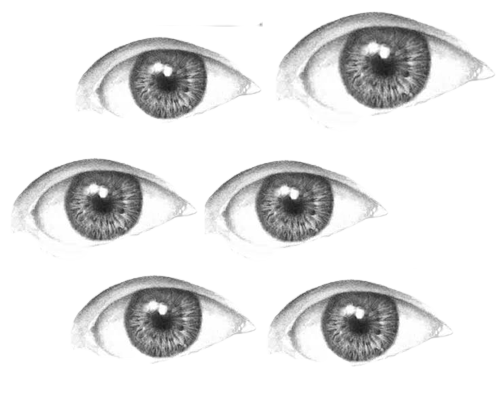
________________________________
________________________________
Are your interpretations very different from what the ancients may have thought? Symbols can begin to have a common meaning through repeated use. Some symbols and images have been used so often in American culture that their meaning is immediately recognized by U.S. citizens:

Uncle Sam: Patriotism, service to our country.
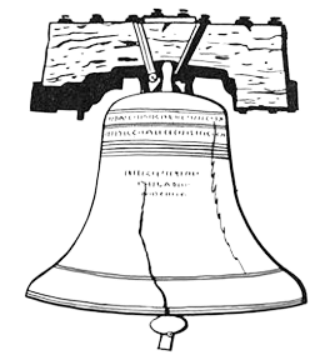
The Liberty Bell: Freedom, Independence.
These two symbols would have little meaning to villagers in Sudan, Peru, or other countries. But some symbols have been used worldwide for so long that they are recognized almost universally to mean a particular thing. Take the symbol of the cross, for instance. First-century pagans looked at the cross as a sign of death and suffering. Today, it’s the universal symbol of Christianity. Ironically, to Christians, it now means life!
Other good examples of imagery frequently found in the Bible are those of an earthquake or the shaking of the earth, fire, and famine. It’s relatively easy to differentiate between literal events and symbolic imagery. Consider the following verses describing literal earthquakes and famines:
Amos 1:1 The following is a record of what Amos prophesied. He was one of the herdsmen from Tekoa. These prophecies about Israel were revealed to him during the time of King Uzziah of Judah and King Jeroboam son of Joash of Israel, two years before the earthquake.
Zech 14:5 Then you will escape through my mountain valley, for the mountains will extend to Azal. Indeed, you will flee as you fled from the earthquake in the days of King Uzziah of Judah. Then the LORD my God will come with all his holy ones with him.
Gen 42:5 So Israel’s sons came to buy grain among the other travelers, for the famine was severe in the land of Canaan.
Ruth 1:1 During the time of the judges there was a famine in the land of Judah. So a man from Bethlehem in Judah went to live as a resident foreigner in the region of Moab, along with his wife and two sons.
Each of those verses seems to be referencing actual events that occurred at specific points in history. Contrast those verses with the following symbolic images:
Ezek 5:12 A third of your people will die of plague or be overcome by the famine within you. A third of your people will fall by the sword surrounding you, and a third I will scatter to the winds. I will unleash a sword behind them.
Psa 104:32 He looks down on the earth and it shakes; he touches the mountains and they start to smolder.
Hab 3:6 He takes his battle position and shakes the earth; with a mere look he frightens the nations. The ancient mountains disintegrate; the primeval hills are flattened. He travels on the ancient roads.
Ezek 5:17 I will send famine and wild beasts against you and they will take your children from you. Plague and bloodshed will overwhelm you, and I will bring a sword against you. I, the LORD, have spoken!”
Amos 8:11 Be certain of this, the time is coming,” says the sovereign LORD, “when I will send a famine through the land – not a shortage of food or water but an end to divine revelation!
These prophetic words painted pictures people were familiar with. They symbolized coming spiritual judgments and disasters—earth-moving events such as the toppling of kingdoms and the fall of rulers, famines of revelation, and spiritual Godliness. These spiritual disasters may have been accompanied by literal earthquakes and famines, but they were intended as warnings of the far-reaching consequences of sin and rebellion against God.
John‘s vision had this same kind of cultural significance – a multitude of symbolic images illustrating spiritual concepts and trials the young church would soon face. At first reading, these symbols may seem vague to us. However, as we’ve seen, the interpretations may not be as complicated as we first thought, and many are interpreted within the text itself.
Before getting into John’s vision, let’s use another prophet’s experience as an example of how prophetic images can be interpreted. The images used in the previous pictorial exercise of a person, ox, lion, eagle, eyes, wings, and wheel are from Ezekiel’s first vision and present an excellent example:
Ezekiel 1 (emphasis mine)
4 I looked, and I saw a windstorm coming out of the north—an immense cloud with flashing lightning and surrounded by brilliant light. The center of the fire looked like glowing metal, 5 and in the fire was what looked like four living creatures. In appearance their form was human, 6 but each of them had four faces and four wings. 7 Their legs were straight; their feet were like those of a calf and gleamed like burnished bronze. 8 Under their wings on their four sides they had human hands. All four of them had faces and wings, 9 and the wings of one touched the wings of another. Each one went straight ahead; they did not turn as they moved. 10 Their faces looked like this: Each of the four had the face of a human being, and on the right side each had the face of a lion, and on the left the face of an ox; each also had the face of an eagle. 11 Such were their faces. They each had two wings spreading out upward, each wing touching that of the creature on either side; and each had two other wings covering its body. 12 Each one went straight ahead. Wherever the spirit would go, they would go, without turning as they went. 13 The appearance of the living creatures was like burning coals of fire or like torches. Fire moved back and forth among the creatures; it was bright, and lightning flashed out of it. 14 The creatures sped back and forth like flashes of lightning. 15 As I looked at the living creatures, I saw a wheel on the ground beside each creature with its four faces. 16 This was the appearance and structure of the wheels: They sparkled like topaz, and all four looked alike. Each appeared to be made like a wheel intersecting a wheel. 17 As they moved, they would go in any one of the four directions the creatures faced; the wheels did not change direction as the creatures went. 18 Their rims were high and awesome, and all four rims were full of eyes all around. 19 When the living creatures moved, the wheels beside them moved; and when the living creatures rose from the ground, the wheels also rose. 20 Wherever the spirit would go, they would go, and the wheels would rise along with them, because the spirit of the living creatures was in the wheels.
Use a worksheet like the following example to interpret Ezekiel’s images. Look through the eyes of an Israelite’s everyday experiences along with clues found in other verses. List keywords in each verse and what those images bring to mind. Use a Bible program or the index of your Bible to search for those keywords and verses that seem to be related to what Ezekiel is seeing. Finally, interpret those images in your own words.
EXAMPLE WORKSHEET
Ezek 1:4 I looked, and I saw a windstorm coming out of the north—an immense cloud with flashing lightning and surrounded by brilliant light. The center of the fire looked like glowing metal.
Common Associations
Related Verses
Your thoughts
Windstorm: Blowing, gusting, gale, thunderstorm, sandstorm…
Isa 29:6 the LORD Almighty will come with thunder and earthquake and great noise, with windstorm and tempest and flames of a devouring fire.
Acts 2:2 Suddenly, a sound like the blowing of a violent wind came from heaven and filled the whole house where they were sitting.
2Sam 22:11 He mounted the cherubim and flew; he soared on the wings of the wind.
Seems to illustrate the mighty moves of God – The move of the Holy Spirit…
Flashing lightning, fire: Immense energy, heat, burning, bright, light, consume, destroy…
2Sam 22:13 Out of the brightness of his presence bolts of lightning blazed forth.
Exod 3:2 There the angel of the LORD appeared to him in flames of fire from within a bush…
Exod 13:21 the LORD went ahead of them … by night in a pillar of fire to give them light.
Exod 19:18 Mount Sinai was covered with smoke, because the LORD descended on it in fire.
Illustrates God’s Presence: brilliant, consuming, powerful, guiding, directing
Ezek 1:5 … and in the fire was what looked like four living creatures. In appearance their form was human…
Living creatures: alive, created things Human:
Gen 1:20 And God said, “Let the water teem with living creatures, and let birds fly above the earth across the vault of the sky.”
Gen 2:7 Then the LORD God formed a man from the dust of the ground and breathed into his nostrils the breath of life, and the man became a living being.
These “creatures” were alive and represented God’s creation.
Ezek 1:6 but each of them had four faces and four wings.
Four – 4 seasons, 4 winds, 4 directions
Isa 11:12… he will assemble the scattered people of Judah from the four quarters of the earth.
Four seems to be related to things of the earth or creation.
Ezek 1:7 Their legs were straight; their feet were like those of a calf and gleamed like burnished bronze.
Legs straight – Sturdy, strong Like calf – Energetic, agile Like burnished bronze – Solid, glistening, strong.
Prov 4:11 I instruct you in the way of wisdom
and lead you along straight paths.
Ps 29:6 He makes Lebanon leap like a calf, Sirion like a young wild ox.
Dan 10:6 His body was like topaz, his face like lightning, his eyes like flaming torches, his arms and legs like the gleam of burnished bronze, and his voice like the sound of a multitude.
The creature’s legs were straight, implying straight paths and correct direction. They were sturdy, strong, and agile like a young calf, as solid and glistening as shining bronze.
Continue exploring each verse, identifying the images used, and interpreting them in your own words. Finally, using the interpretations from your worksheet, summarize Ezekiel’s vision in your own words. Here are some key takeaways that stood out to me:
Ezekiel saw four creatures in God’s Presence that had a human form. He saw the different facets of these creatures’ natures. They were strong, agile, and did not vary from God’s purpose and protection. They had one purpose and did not vary from that purpose. These are the qualities Ezekiel saw:
- Human in appearance (faces of a man)
- Supreme and powerful (Lion)
- Strength lies in bearing burdens and sacrifice (Ox)
- High and lifted up (Eagle)
- The purpose is one with God and under the covering of The Father. (Wings)
- Goes wherever the Spirit leads without hesitation (Wheels; Straight)
- The appearance and authority of God (This was the appearance of the likeness of the glory of the LORD – Ezek 1:28)
There is only one human being that fits the images Ezekiel was seeing. I believe Ezekiel was seeing God’s plan of redemption, the Christ, Messiah, God’s Word. Too simple an explanation? Maybe so. But as I read these passages, I find clarity when I remember that God’s Words do not return to Him empty (Isa 55:11). If God’s words are indecipherable puzzles, they’re relatively useless to believers.
Many have believed that only certain people can understand this apocalyptic language. I’m certainly not a “special” person or an Old Testament prophet, but I believe Jesus’ promise that his Spirit will lead us to truth:
John 14:16-17 And I will ask the Father, and he will give you another advocate to help you and be with you forever— 17 the Spirit of truth. The world cannot accept him, because it neither sees him nor knows him. But you know him, for he lives with you and will be in you.
I suggest that our human nature and intellect tend to overthink many things pertaining to God. We love mysterious and secret things. We sometimes complicate the simplicity of Jesus’ teachings to the point that it might not have been recognized by first-century saints. We rightfully acknowledge that God’s Power, Might, Beginning, and End lie beyond human comprehension. But His Nature can be understood by looking at Jesus.
John 14:7-9 If you really know me, you will know my Father as well. From now on, you do know him and have seen him.” 8 Philip said, “Lord, show us the Father and that will be enough for us.” 9 Jesus answered: “Don’t you know me, Philip, even after I have been among you such a long time? Anyone who has seen me has seen the Father.
Jesus exemplifies everything God Is. Remember the familiar saying, Know Jesus, know God. No Jesus, no God? The premise of this book is that God gave John a revelation that was meant to be understood. This premise is based on the concept of eternal principles, as discussed earlier. Consider Paul’s wise counsel:
1 Cor 14:6-17 Now, brothers and sisters, if I come to you and speak in tongues, what good will I be to you, unless I bring you some revelation or knowledge or prophecy or word of instruction? 7 Even in the case of lifeless things that make sounds, such as the pipe or harp, how will anyone know what tune is being played unless there is a distinction in the notes? 8 Again, if the trumpet does not sound a clear call, who will get ready for battle? 9 So it is with you. Unless you speak intelligible words with your tongue, how will anyone know what you are saying? You will just be speaking into the air. 10 Undoubtedly there are all sorts of languages in the world, yet none of them is without meaning. 11 If then I do not grasp the meaning of what someone is saying, I am a foreigner 12 So it is with you. Since you are eager for gifts of the Spirit, try to excel in those that build up the church. 13 For this reason the one who speaks in a tongue should pray that they may interpret what they say. 14 For if I pray in a tongue, my spirit prays, but my mind is unfruitful. 15 So what shall I do? I will pray with my spirit, but I will also pray with my understanding; I will sing with my spirit, but I will also sing with my understanding. 16 Otherwise when you are praising God in the Spirit, how can someone else, who is now put in the position of an inquirer, say, “Amen,” to your thanksgiving, since they do not know what you are saying? 17 You are giving thanks well enough, but no one else is edified.
Although Paul was specifically addressing the use of spiritual gifts in the Church, it’s easy to see the eternal principles involved. God desires His Church to “bring some revelation or knowledge or prophecy or word of instruction” in order to “build up the church” and to “edify it.” He also desires that we pray and sing with “understanding”. If the Father wanted the first-century saints to share gifts others could understand and profit from, it must follow that He wants all His children throughout time to understand the things of the Spirit.
1 Cor 2:12 What we have received is not the spirit of the world, but the Spirit who is from God, so that we may understand what God has freely given us.
This is why prophetic images are meant to be understood by any believer who asks, seeks, and knocks (Matt 7:7). As we’ve seen, these images can be identified by:
- Common everyday usage;
- By how they are used and interpreted in other scriptures.
- How they are interpreted within the text itself.
Eternalism maintains that God’s revelation to the Apostle John can be understood similarly. God warned the people of Roman-occupied Judea of the coming destruction. The vision given to John was explicitly meant to prepare the first-century saints for the persecutions and trials ahead. At the same time, it expresses eternal principles that apply to believers in every age of history.
*All Scripture quotations, unless otherwise indicated, are taken from the Holy Bible, New International Version®, NIV®. Copyright ©1973, 1978, 1984, 2011 by Biblica, Inc.™ Used by permission of Zondervan. All rights reserved worldwide. www.zondervan.comThe “NIV” and “New International Version” are trademarks registered in the United States Patent and Trademark Office by Biblica, Inc.™





